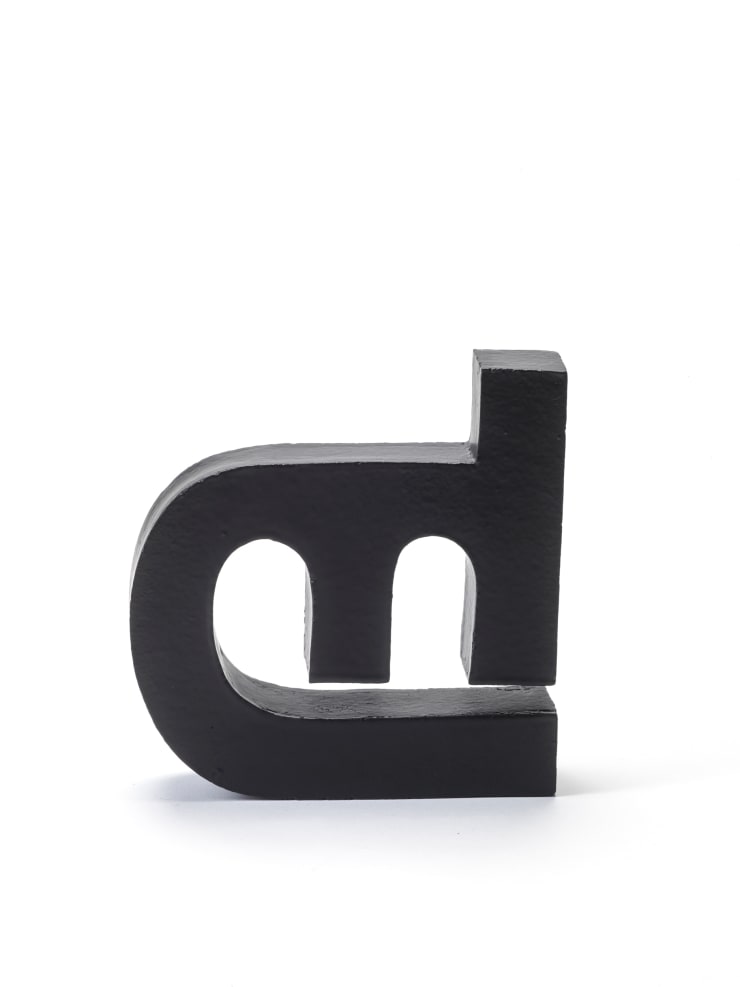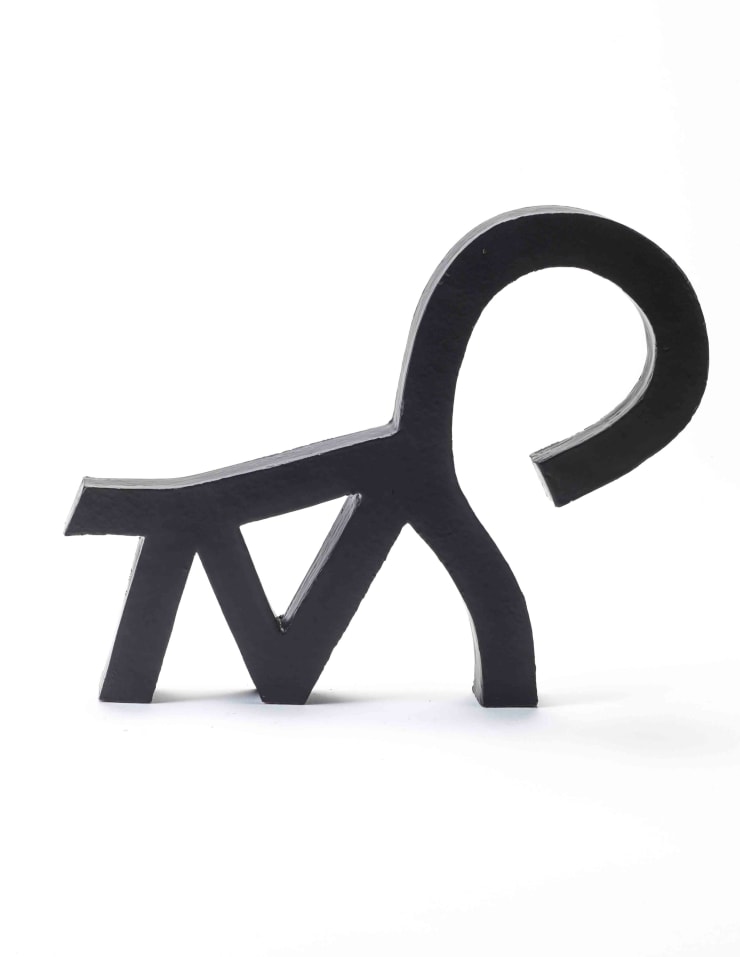-

-
YOUR APPROACH TO COLOUR SEEMS CENTRAL TO YOUR WORK. CAN YOU TELL US A BIT MORE ABOUT HOW THIS HAS DEVELOPED THROUGHOUT YOUR CAREER?
I have always regarded colour as one of the sensory delights of the human experience. I began using colour whilst still a student and I certainly wasn’t alone in doing so. It was probably part of a contemporary shift at the time, away from the Modernists’ concern with ‘truth to materials’ and perhaps more generally a cultural liberation of design that new materials such as plastics allowed.
At the beginning of my career all my work was quite highly coloured and cast in polyester resin. The need to make my sculptures more durable, especially if they were to exist in an outside environment, meant that I changed to using bronze as my preferred medium. Bronze in itself is a beautiful material, especially after the passage of time, but even so, immediately after casting it does need to be coloured to draw the worked surface together into a cohesive and comprehensive whole. Traditionally, chemical patination gave the colour black and various degrees of brown and green. Because of this restriction I sacrificed the use of bold colour in my work and concen - trated mainly on refining the form and shape of my images. Initially I regretted this reduction in the available palette, not just for its own sake but because I regarded bronze as such a traditional material. Devoid of colour, my essentially figurative work lacked the contemporary feel I sought. At this early point I was of a mindset that to simply to paint the bronze seemed such an act of sacrilege that it was not an available option.
Nonetheless, through working the foundry Pangolin Editions, colour has gradually returned to becoming an integral part of my sculpture. First we experimented with new and highly inventive chemical patinas, then with raw pigments and finally with paint itself or more recently a combination of all three. Regarding the bronze simply as an appropriate casting medium and not being precious about it has released me from the inhibitions of its traditional constraints and allowed colour in all its sensuousness to flood back into my work.
-
-
OBSERVATION OF THE NATURAL WORLD, SCIENTIFIC RESEARCH, ANTHROPOLOGY AND POETRY ALL SEEM TO INFORM AND INSPIRE YOU. WOULD YOU AGREE?
You’re right, even as a child the natural world has always been a delight and a fascination, and art and the process of making has followed closely behind. It took many years for me to learn exactly how I might effectively combine these two passions in a meaningful way. For a long time I’ve been preoccupied with the process of how we perceive the world around us.
I think it is important to understand that seeing is not simply a mechanical process and our construct of the world is made by the information from the eye being processed by the brain through experience, knowledge and emotion. So images made too close to resembling reality will suffer from the scrutiny of a direct comparison with life itself. It is the general rather than the specific that is more likely to form an accord with our perception system and will then resonate successfully in our minds. Perhaps this is what we call beauty?
-

-
Over my years of making I’ve come to recognise that there are aesthetic parallels in evolutionary biology and our own human cultural development of image-making. My own current sculptural concerns, for example, have been informed by looking at patterns. In nature patterns occur everywhere of course, but in the markings of animals, birds and fish it would seem that there is a process describing the under - lying biological formation. This process is often referred to as morphogenesis or sometimes Turin patterns, after Alan Turin of Enigma Code fame, who discovered the mathematical principle for what is essentially ‘order out of chaos’.
In biology this process is developed by special pigment cells in the skin being switched on and off to produce dots and lines which can then form circles and will sometimes close again to form dots. So many animals, birds, fish and insects carry similar patterns of dots, stripes, and ‘eye’ formations specifically because of these underlying processes. In the same way, many cultures around the world have developed independent visual languages that have similar visual vocabularies made up of the same organic geometries of dots, lines and circles. Judging from anthropological and archaeological evidence these motifs probably started as decorations on the human body before at some point being transferred to other surfaces. These abstract patterns, like their biological counterparts, must have gradually developed into coherent patterns and over time have developed into visual languages representing or symbolising elements of their cultural life. -
-
IN YOUR MORE RECENT WORK YOU SEEM TO HAVE EXPLORED THESE THEMES ON AN EVEN DEEPER AND DISCERNING ALMOST MICRO LEVEL AND I UNDERSTAND YOU RECENTLY HAD A MAJOR SHOW AT KINGS PLACE,LONDON EXPLORING THIS?
Yes, that’s right. The central theme of my more recent work is that it is inspired by the process of evolution. What is implicit in the act of evolution is change. All life is connected and we once evolved from a single common ancestor and what still connects us today is that every living thing is made up of cells. So recently, I’ve been interested in using cellular patterns to act as a metaphor for the whole of life. Nevertheless we now realise that human behaviour itself is affecting these processes of change. So in my new works I’ve overlaid symbols of the human presence onto the cellular patterns of life. The ‘Fools Cap’ for instance represents our current relationship to the natural world. So where the cap touches so the pattern is flipped and what was once white is now black and vice versa. This inversion suggests, or indeed signifies, that humanity is having a significant and often detrimental impact on the delicate patterns that are the web of life and we need to protect and celebrate our planet’s precious diversity.
Introducing: Jon Buck
Current viewing_room







